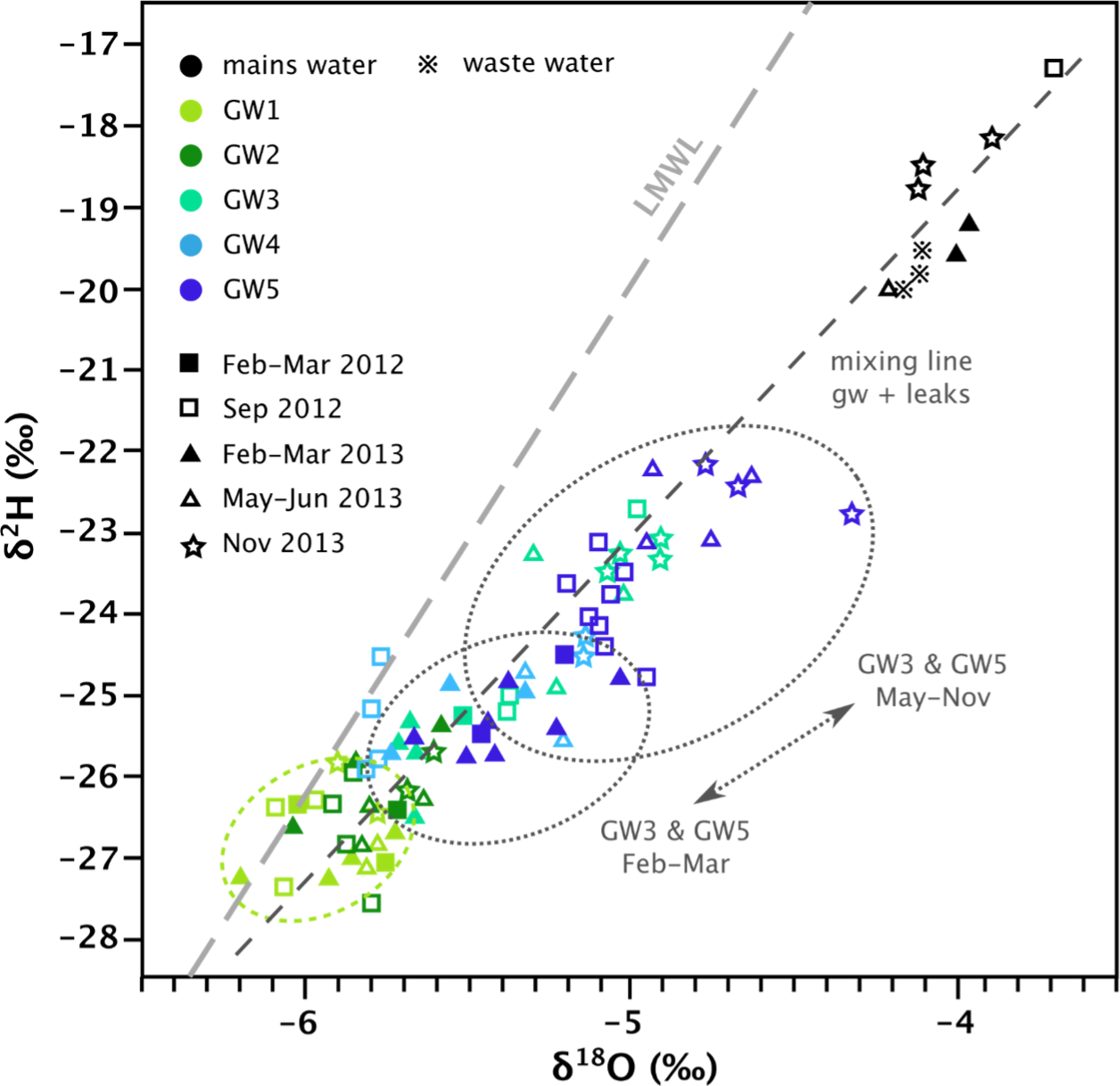7.7 Detecting Surface Water in Groundwater
Grimmeisen and others (2017) conducted a multi-tracer study, using chemical parameters (especially Cl– and NO3–) and the stable isotopes of H, N and O, in and around the city of As-Salt in Jordan (Figure 41). The stable water isotopes alone provided good evidence for leakage from various possible “surface water” sources, in this case human sources such as water mains and sewers. The distinctive isotope composition of these urban water sources is due to the city’s water supply being the King Abdullah Canal, fed largely from highly evaporated surface water in Lake Tiberias and the Yarmouk River, with only a portion from the Mukheiba wells. Mixing with local groundwater is apparent in some of the boreholes that were monitored, with a seasonal fluctuation in locations where leakage from urban water sources affects some of the local groundwater more in the dry summer (May to November) and less in the wetter winter. The mixing line allows estimation of the proportion of leakage water comprising local groundwater, which the authors calculated as up to 70 percent.

Figure 41 – Isotope composition of various groundwater sources (GW1-5) and the urban water (clean water and waste water) over several seasons at As-Salt, Jordan. The changes in groundwater from unmixed/fresh (GW1-2) to the most mixed/polluted (GW3 & GW5 in May-Nov) is revealed by the change in stable isotope composition, which can be used to estimate leakage (after Grimmeisen et al., 2017).
Sunguro and others (2000) undertook a study of groundwater in the dolomites of the Mcheka Formation of the Palaeoproterozoic Lomagundi Belt in northern Zimbabwe, known informally as the Lomagundi dolomites. Spring water had relatively negative values, compared to precipitation, indicating recharge during heavy precipitation events (as discussed in Section 7.3 “Selective Recharge”), whereas boreholes, particularly those in areas of active irrigation, tended to have water with more positive values, suggestive of evaporative isotope enrichment and therefore irrigation return flows to the aquifer. This further highlights the vulnerability of the aquifer to pollution by agricultural waters.
